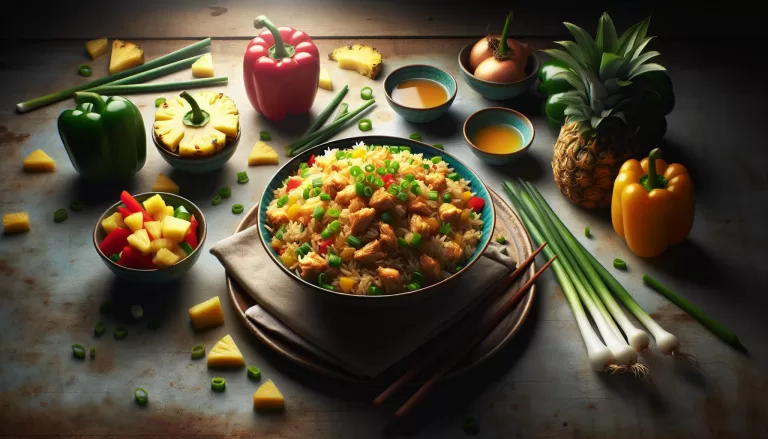Master Chinese Beef Noodle Soup At Home

Chinese beef noodle soup is a hearty, flavorful dish that is popular around the world. This article offers helpful guidance and recipes for making tasty Chinese beef noodle soup using a stovetop or Instant Pot. You’ll find easy-to-follow steps for preparing the aromatic broth, cooking the beef perfectly, and pulling all the components together into a comforting bowl.
Select the Best Cuts of Beef
The first step in making great Chinese beef noodle soup is choosing the right cut of beef. Look for chuck roast, brisket, shank, or short ribs, as these cuts become tender and flavorful when braised. Avoid lean cuts like sirloin, which can become tough and dry during extended cooking. Purchase around 1.5 pounds of beef, so you’ll have plenty of leftovers.
Prepare the Aromatics
Chinese beef noodle soup uses aromatics like garlic, ginger, and scallions to create a tasty broth. Peel and mince 2-3 cloves of garlic and a 1-inch piece of fresh ginger. Thinly slice 4-5 scallions, separating the green and white portions. The whites will be simmered to make the broth, while the greens are saved to garnish the finished soup.
Brown the Beef
For maximum flavor, the beef should be seared before simmering. Heat 1-2 tablespoons oil in a large pot or Dutch oven over medium-high heat. Add the beef and brown in batches for 2-3 minutes per side. This caramelization adds tons of flavor. The browned beef should be taken out of the pot and kept aside.

Sauté the Aromatics
In the same pot, heat another tablespoon of oil over medium heat. Add the ginger, garlic, and scallion whites. Sauté for 1-2 minutes until very fragrant.
Deglaze with Wine
Pour 1/4 cup Chinese rice wine or dry sherry into the pot, stirring to dissolve any browned bits on the bottom. This adds even more deep, savory flavor.
Add Your Liquid
Return the beef to the pot with 4-5 cups of beef, chicken, or water. You can supplement with 2-3 dried shiitake mushrooms for richer flavor.
Season the Broth
Add soy sauce, salt, sugar, and spices like star anise, cinnamon stick and Sichuan peppercorns. The liquid should first be brought to a boil before being simmered.
Simmer the Soup
Allow the soup to simmer for 1-2 hours until beef is tender. For the stovetop, maintain a gentle simmer and check periodically to ensure the broth hasn’t reduced too much. For Instant Pot, pressure cook on high for 35-40 minutes with a natural pressure release.
Cook the Noodles
When the beef is nearly done, prepare the noodles. Boil ramen, udon, rice noodles, or pasta until just shy of al dente. Drain and rinse.
Blanch the Vegetables
While noodles cook, blanch bok choy or other veggies like mushrooms or bamboo shoots for 1-2 minutes until crisp-tender. For cooking to cease, shock in an ice bath.
Finish the Broth
When beef is fork-tender, please remove it from the broth. Skim and strain the broth. Season to taste with salt, pepper, rice vinegar, or chilies.
Assemble the Bowls
Divide cooked noodles between serving bowls. Arrange blanched vegetables over noodles, then top with slices of beef—ladle hot broth into each bowl. Garnish with scallion greens.

Stovetop Chinese Beef Noodle Soup Recipe
This stovetop method allows you to simmer the soup as long as needed for ultra-tender beef in a full-bodied, aromatic broth.
Ingredients
- 1.5 pounds beef chuck roast, cut into 1-inch pieces
- 3 cloves garlic, minced
- 1-inch piece of fresh ginger, minced
- 4 scallions, whites minced, greens thinly sliced and reserved for garnish
- 1-2 tablespoons vegetable oil
- 1⁄4 cup of dry sherry or rice wine from China
- 4-5 cups beef broth or chicken broth
- 2-3 dried shiitake mushrooms (optional)
- 3 tablespoons soy sauce
- 1 tablespoon sugar
- 1 teaspoon sesame oil
- Salt and pepper to taste
- 8 ounces of Chinese noodles or pasta
- 1 pound bok choy or napa cabbage, cut into wedges
Instructions
- Rinse beef and pat dry—heat oil in a large pot over medium-high heat. Beef should be added in batches, and it should be browned all over. Remove and set aside.
- Add garlic, ginger, and scallion whites to the pot. Sauté 1-2 minutes until fragrant.
- Add wine, stirring to deglaze the bottom of the pot.
- Return beef to pot and add broth, mushrooms (if using), soy sauce, sugar, sesame oil, and desired salt and pepper. Bring to a boil.
- When the meat is tender to the fork, turn down the heat, cover, and simmer gently for 1–2 hours.
- Meanwhile, boil noodles according to package directions. Rinse—Blanch bok choy until crisp-tender.
- Remove beef from broth. Skim and strain broth. Season with salt and pepper to taste.
- Divide noodles, bok choy, and beef between serving bowls—ladle hot broth. Garnish with scallion greens.
Instant Pot Chinese Beef Noodle Soup
This pressure cooker method dramatically cuts cooking time while producing fall-apart tender beef and tons of flavor.
Ingredients
- 1.5 pounds beef chuck roast, cut into 1-inch pieces
- 3 cloves garlic, minced
- 1-inch piece of fresh ginger, minced
- 2 scallions, whites minced, greens sliced for garnish
- 1-2 tablespoons vegetable oil
- 1⁄4 cup of Chinese rice wine or dry sherry
- 4-5 cups beef or chicken broth
- 1 tablespoon soy sauce
- 1 teaspoon sesame oil
- Salt and pepper to taste
- 8 ounces of Chinese noodles or pasta
- 1 pound baby bok choy or napa cabbage, cut into wedges
Instructions
- Select the Sauté setting on Instant Pot. Heat the oil, then brown beef in batches, about 2 to 3 minutes per batch to complete.
- Add garlic, ginger and scallion whites. Sauté 1 minute until fragrant.
- Add wine, stirring to deglaze the bottom of the pot.
- Add broth, soy sauce, sesame oil, and the desired amount of salt and pepper. Cancel Sauté.
- Secure the lid, ensuring the valve is set to seal. Pressure cook on High for 35-40 minutes. Allow natural pressure release.
- Meanwhile, boil noodles according to package directions. Rinse—Blanch bok choy until crisp-tender.
- Remove beef from broth. Skim and strain broth if desired. Season with salt and pepper to taste.
- Divide noodles, bok choy, and beef between serving bowls, then ladle hot broth. Garnish with scallion greens before serving.
Tips for Flavorful Homemade Broth
- Roast bones before simmering for deeper flavor
- Soak dried mushrooms to add earthy, savory notes
- Add warm spices like cinnamon, star anise, cloves
- A splash of vinegar brightens the flavor at the end
- Let broth reduce slightly to concentrate flavor
Customize Your Chinese Beef Noodle Soup
- Thin or wide noodles like ramen, udon, rice noodles or pasta
- Leafy greens like bok choy, napa cabbage, spinach
- Mushrooms like shiitake, enoki, wood ear
- Bamboo shoots, water chestnuts
- Chili oil, chilies, cilantro, lime wedges
Storage and Reheating
- Store broth and beef separately for up to 4 days
- Freeze broth and beef for up to 4 months
- Gently reheat using a stovetop or microwave
- Add hot broth to cooked noodles and vegetables just before eating
You can make restaurant-quality Chinese beef noodle soup in your kitchen with simple instructions. Adjust spices to your taste and add your favorite vegetables for a customized bowl. This nourishing, flavorful soup makes a wallet-friendly yet special weekend meal.
Frequently Asked Questions
What cut of beef is best?
Look for chuck roast, brisket, shank, or short ribs. These cuts become tender when braised for a long time. Avoid super lean cuts like sirloin.
How long should I simmer the soup?
For maximum flavor and tender beef, simmer the soup for 1-2 hours on the stovetop or 35-40 minutes in an Instant Pot. The longer, the better.
What noodles work best?
Ramen, udon, rice noodles, and pasta all work well. Cook the noodles just until al dente before adding to the hot soup.
How can I boost the broth flavor?
Roast the bones first for deeper flavor. Add dried shiitake mushrooms, warm spices like star anise and cinnamon, or a splash of vinegar at the end.
Should I cook the vegetables separately?
Yes, blanch bok choy or other veggies in boiling water to keep them crisp-tender after adding to the piping hot soup.









